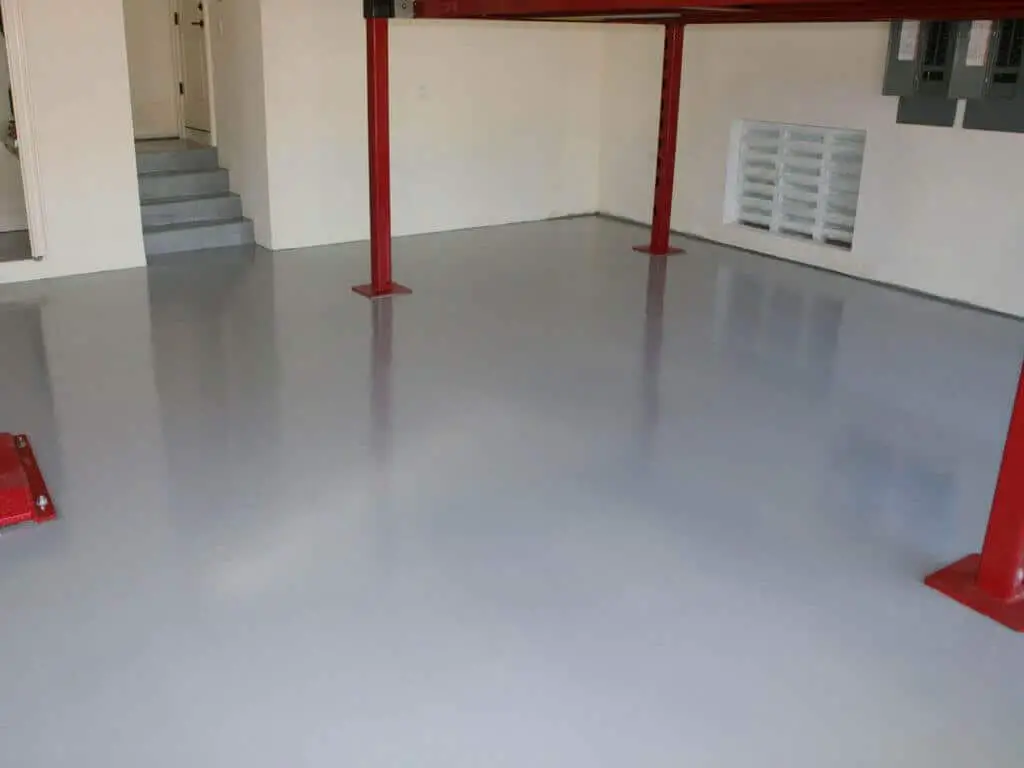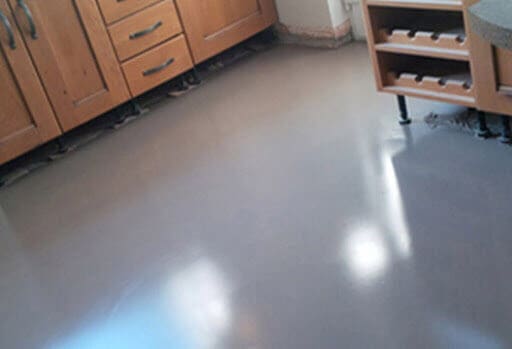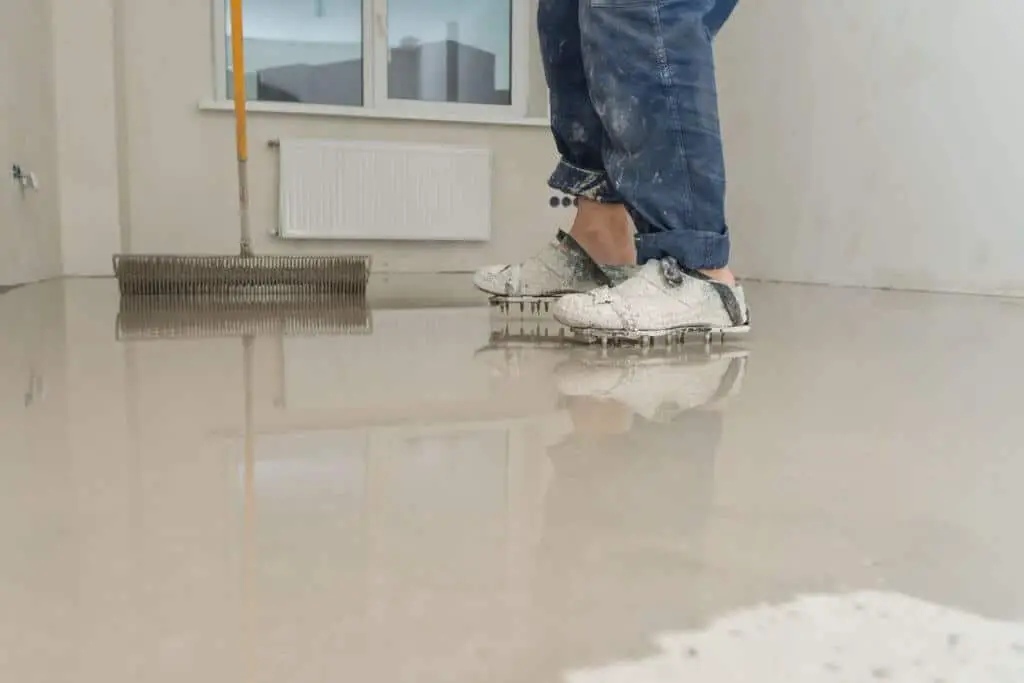Latex flooring is a synthetic compound that consists of a special blend of sand, cement, and synthetic polymers that can be applied to various types of surfaces.
Latex floor can even be applied over wooden floor; as long as they are installed correctly, it functions properly as a covering for underfloor heating.
Latex floor is great for evenly out rough floor surfaces, and it also gives existing floor some rigidity in preparation for installation of floor coverings such as carpet, vinyl, and ceramic floor tiles.
How To Latex A Floor
Table of Contents
If you want to change an existing floor in your home into latex flooring, with just a couple of tools, you can actually pull it off. But here are some safety precautions you should follow;
Before placing latex compound over your floor, if you have underground heating, always make sure to check the brand of latex compound; this is to make sure that the latex compound is compatible with the heating, so it doesn’t damage it.
Depending on the size of the area you are applying the latex floor, having a partner will help you to get the job done easily and quickly.
Wearing shoes with spikes allows you to walk on top of the latex without damaging the surface.
Step 1
Remove existing floors; if you have tile or carpet on the floor, it will need to be removed so that you can examine the subfloor.
If you are removing tile floor, you can make use of a utility knife to cut the grout and then use a pry bar to lift up the tile, while if you are removing carpet, simply pull the carpet off the floor; you will need a tool like a pry bar to pull up the carpet.
If you have a wooden or concrete floor, you can simply just clean out the room and take out the furniture.
Step 2
Apply your level in on areas you suspect to be uneven. A level contains a liquid with an air pocket, so when it is placed on a floor, If the air bubble settles in the middle, the floor is even, but if the air pocket slides to one side, it is uneven.
Even if you have a dip on your floor, it shouldn’t be more than 2 inches deep.
Another way to test your floor for dips is by Setting a straightedge across the floor, then check to see if the straightedge tips to one side; if it does, then it is likely that your floor has a raised bump.
If you also notice a gap between the straightedge and the floor, then there’s a dip in that area.
Another dip testing method is by tying a strip to one side of the room then walking across the room with the string held very tightly.
If the floor is completely even, the string should just barely skim across the top of the floor, but if there’s anywhere the floor dips below the string or pushes it up, your floor is uneven.
Step 3
Start by cleaning off the floor surface, removing any glue, mortar, or residue that might have been left behind while taking off your previous floor.
For heavily stuck residue, you can use a scraper to remove them and use a broom or vacuum to remove any dirt, dust, or debris till the area is completely clean.
For even more thorough cleaning, you can go in with a wet sponge and soapy water to wash the area. But you have to allow the area dry completely before proceeding with the application.
If you are using any type of wooden subfloor, you will need to roll out and attach a metal lath over the floor before you latex self-leveling compound on it.
A metal lath is simply a net of enmeshed metal that you can buy at your local hardware stores.
Step 4
Time for the most important part of the whole process, the latex application. Some latex compounds come with two different components; liquid latex solution and a bag of dry mortar mix. So you will need to mix out enough quantity that will cover the entire room.
If you are applying the latex compound to a large area and you work alone, you might want to mix the compounds in batches because, after one hour of mixing, the compound can become hard to spread.
The product you buy should come included with package instructions that will help you determine how much you will need.
Step 5
After mixing the compound, starting pouring it on the floor starting at the farthest end of the room and work your way towards the door so that you do not step on newly applied latex on your way out, if you have dips no more than 2 inches in depth, the latex will settle in them and give you a smooth floor surface.
After applying the latex compound, use a screed to smooth out the latex. If you don’t know what a screed is, it is a long, flat tool used to make mortar even. Scraping the screed over the newly applied self-leveling latex compound will help to spread it evenly over the floor, ensuring it fills up every dip.
In place of a screed, you can make use of a paint roller or finishing trowel.
Step 6
Finally, allow the latex to sit and dry for up to 24 hours. You can test the floor dryness with a gloved finger or a dry stick. You want to make sure that the floor is completely dry before continuing with your project to install any type of floor.
How Long Does It Take To Latex A Floor?
The latex application process can take anywhere from a couple of hours to a few days to apply depending on the size of the area you are applying it to and how many people undertakes the job.
However, you do not want to allow a mixture of latex to sit longer one hour unused because the latex can become hard to spread.
How Thick Can You Lay Latex?
One of the pros of latex floor is that it can be laid to a thin 3-40mm depth, and you can add in sharp sand for added for thickness. A primer is usually required in order to bond the latex to the existing base. Latex compounds dry quickly, so it allows for floor finishes to be applied promptly.
How Long Before You Can Walk On Latex Floor?
It takes latex floor anywhere between one hour to six hours to cure completely before it starts drying. It is recommended to allow your latex floor to dry for at least 24 hours, then test it with a gloved finger or stick to see if it’s dry; if it isnt, give it another 24 hours.
So before walking over your latex floor, you have to wait at least 48 hours; if you are applying any floor surface on top, you just need to wait for 24 hours.
You can speed up the drying process by opening up the windows in the room or placing small fans in the area.
Conclusion
Latex floor is a great compound that can be used to level out surfaces so that you can install a new floor easily.


